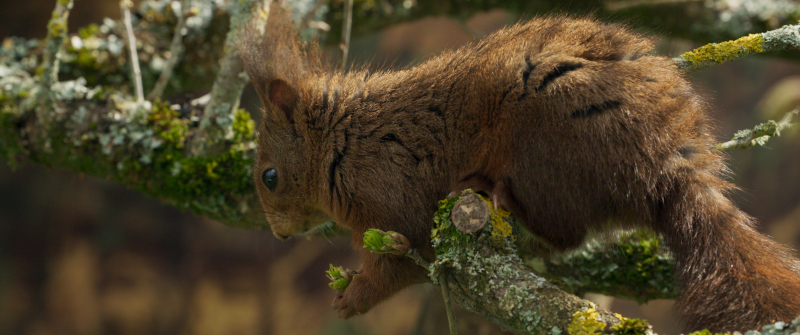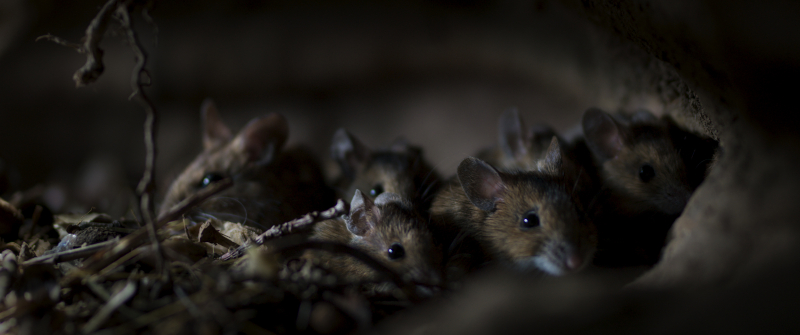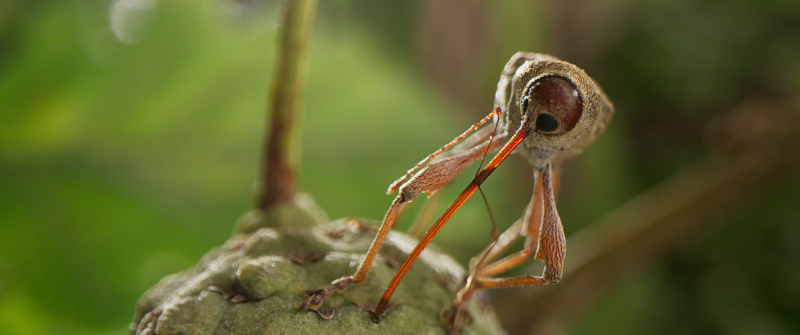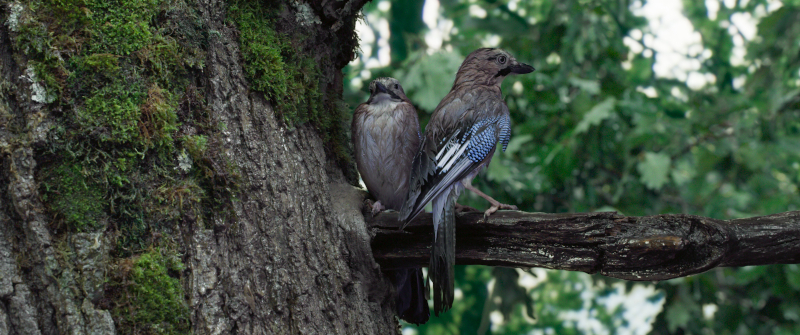Directors – Laurent Charbonnier, Michel Seydoux – 2022 – France – Cert. U – 80m
****
The life of an oak tree, and the community of animal life which surrounds it, through the four seasons of a year – out in UK cinemas on Friday, July 12th and then on Digital Download from Monday, August 12th
This French movie is narrated almost entirely in sounds and images: no voiceover narration, no voices added to the animals.
A Pedunculate Oak tree, born in 1810 according to the (subtitled) caption at the end, sits on the edge of a large lake. The opening shots move towards and onto the tree and its branches, introducing us to the wide variety of wildlife present. Acorns hang in abundance, Acorn Weevils buzz and make their way through furrows in the bark, a Eurasian Jay looks at them quizzically, a Eurasian Red Squirrel runs around branches near its nest, and a Great Spotted Woodpecker prepares to do its thing.
I’m cheating slightly here: there are no titles to identify which creatures are which until the list at the end, at which point I made extensive notes. That doesn’t matter as you’re watching, though, as it’s pretty easy to follow the continuity.

At the start, the music tries a little too hard to suggest the animals are jocular, friendly characters, but it doesn’t keep this up after the first few minutes and improves considerably as a result. In line with this suggestion, though, and perhaps trying a little too hard not to upset children, this is nature red in tooth and claw with the red, tooth and claw excised: despite some close calls, we never actually see one animal eat another (onscreen), although there are a few narrow escapes. Personally, I would have included such scenes; they seem a significant part of the natural history package. It’s the food chain, after all.
A few minutes in, the music fades out for the first time and sound effects fade in as the creatures become aware of impending peril; clouds darken, branches sway with ever-increasing movement, and we are plunged into a thunderstorm.

One weevil on a leaf is unceremoniously blown away into unseen oblivion. Another struggles to avoid a droplet of water almost as big as itself. Wood Mice shelter inside their burrow beneath the tree – we’ll return there repeatedly. There’s a real feel for the animals’ peril which is extremely relatable. Sequences like this where the soundtrack consists of nothing but sound effects are arguably the most effective.
Acorns play a significant role; squirrels bury them for the winter, mice eat them underground, birds crack them in their beaks or swallow them whole for later consumption. Two adult Acorn Weevils mate atop an acorn on a branch to the tune of Sway sung by Dean Martin. Later, we see wind and rain knock some acorns from their high-up cups and fall, sometimes bouncing off branches and trunks, to the ground.

Acorn Weevils have a particular relationship with acorns. These weevils have snouts called rostrums; the female has a longer rostrum, which she uses to bore into the acorn and lay her grubs inside. (This is not explained verbally or otherwise, so if, like me, you don’t understand what’s happening, you may be lost.) Later, we see grubs inside and emerging from acorns, burrowing into the soil, maturing through larva and pupa stages before finally emerging as adult weevils. There’s a highly effective sequence where a grub hides to avoid being eaten.
You get a sense throughout of small animals being wary of larger ones, such as the scampering mouse who keeps well out of the way of the boar rooting through the undergrowth. The boars don’t feature heavily, although at one point, there’s a memorable, charging boar-cam reminiscent of the doggy-cam in The Truffle Hunters (Michael Dweck, Gregory Kershaw, 2020). The squirrel, mice and jays are onscreen a lot, though.

One bravura sequence has a jay chased through the forest by a Northern Goshawk, the smaller bird flying as fast as it can in order to survive. (Curiously, the sequence feels a lot like the woodland, aerial bike chase in Return of the Jedi, Richard Marquand, 1983). Another features an Aesculapian Snake, mostly shown as a long, black torso with its head and tail cropped off by frame edge or vegetation hiding one or the other, as it climbs trunk and branches in search of prey. The panicking jay couple must find a way to protect their young in the nest, on which the snake has its sights.
The natural history cinematography, aided no end by current drone, underground and small scale camera technology, is superb, and the footage incredible throughout. The purist insistence on telling the story in sounds and images alone sometimes leads to sequences that don’t work if you don’t already know what’s happening, with no voiceover or helpful animated diagrams to help you out. (For an explanation of how oak trees communicate underground, see the sequence in the excellent Wilding, David Allen, 2023).
Such shortcomings notwithstanding, however, this is a highly impressive and enthralling piece of work. Given its subject is the activity of the abundant wildlife in, around and underneath a large, majestic oak tree, it’s a film that would benefit from being seen on as big a screen as possible. That’s a good reason to get out into the cinema to see it rather than wait for the release online in a month or so’s time.
Heart of an Oakis out in cinemas in the UK on Friday, July 12th and then on Digital Download from Monday, August 12th.
#HeartOfAnOakFilm
Trailer:
